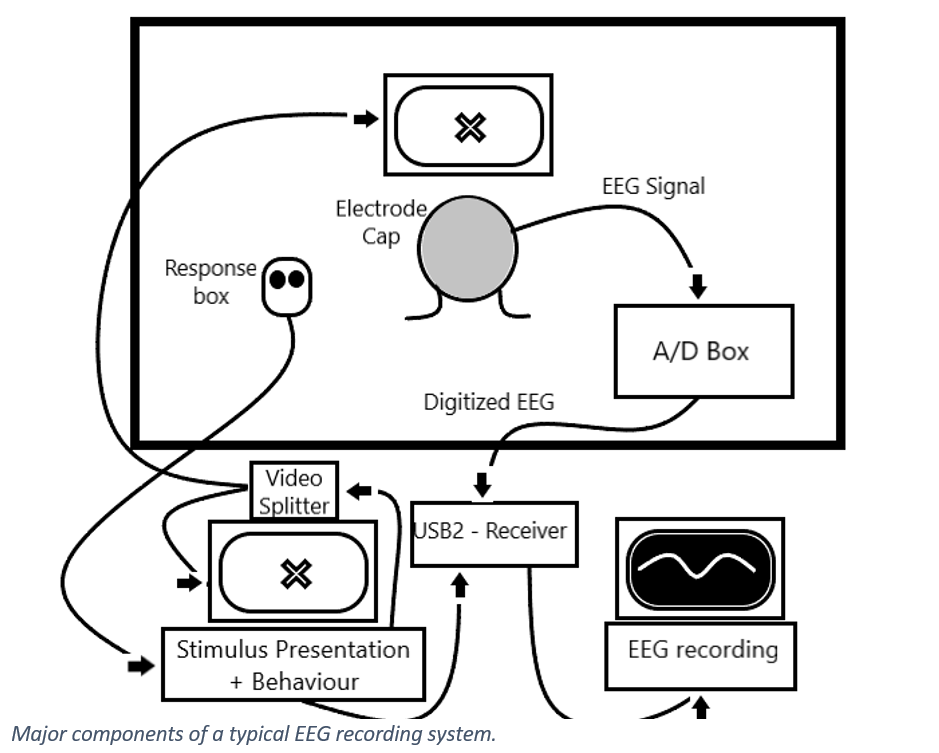Equipment
The Psychology Department at the UiO uses EEG systems from two different suppliers in its labs; BIOSEMI’s and Brain Products. While all EEG systems are fundamentally the same, there are distinct differences between these systems.
BIOSEMI: The ActiveTwo System
The ActiveTwo system is capable of data acquisition from up to 256 active electrodes. At the Psychology Department, the 64-electrode version (which utilizes the standard 10-20 electrode grid scheme) is typically used. Additional flat-type electrodes with individual leads/connectors are available and can be placed anywhere according to the researcher’s requirements. The ActiveTwo system is unique in comparison to most systems in that it natively records data without reference, but with a common mode sense (CMS) and a driven right leg (DRL)electrode, requiring it to be re-referenced offline during later processing (for more information see: https://www.biosemi.com/faq/cms&drl.htm). The system is also capable of receiving external event code triggers through a single 16 bit interface (two 8-bit parallel ports) using an external integration box (part of the ActiveTwo system) which interfaces directly with the acquisition hardware prior to reception with the PC.
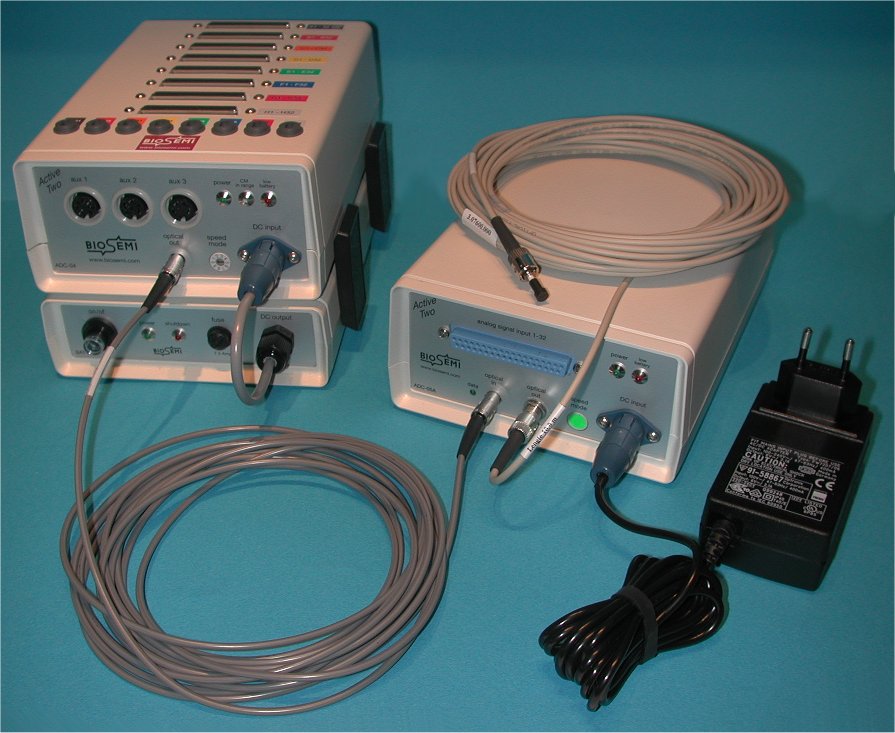
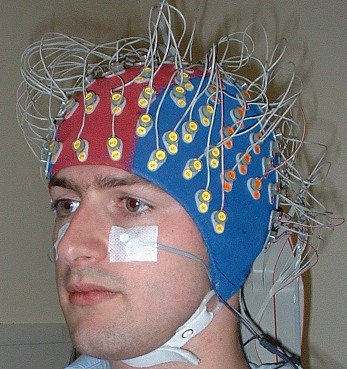
Images ©Biosemi. Used by permission.
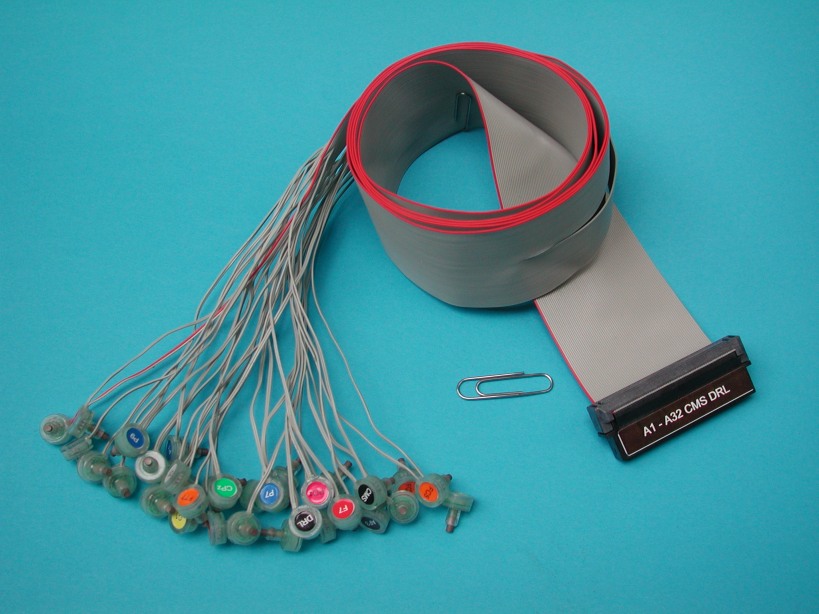 The flat-type active electrodes are designed specifically for use on bare skin for measuring EOG, ECG, EMG or EEG at mastoids, earlobes, nose, nape of the neck, e.g. EOG (electrooculogram) signals. These are combined with EEG signals in order to improve artifact detection (i.e. eye movements and blinks) and trial rejection.
The flat-type active electrodes are designed specifically for use on bare skin for measuring EOG, ECG, EMG or EEG at mastoids, earlobes, nose, nape of the neck, e.g. EOG (electrooculogram) signals. These are combined with EEG signals in order to improve artifact detection (i.e. eye movements and blinks) and trial rejection.
Consequently, EOG is monitored along with EEG to improve one’s ability to distinguish between artifacts and real data. This is sometimes necessitated by a population of interest that is unable to control their eye movements or by the experimental paradigm itself. In experiments where visual fixation is required, EOG is often used simply to exclude trials on which a participant moved their eyes. Below is a diagram of a generic ActiveTwo EEG data acquisition setup.
Brain Products
In contrast to the ActiveTwo system, most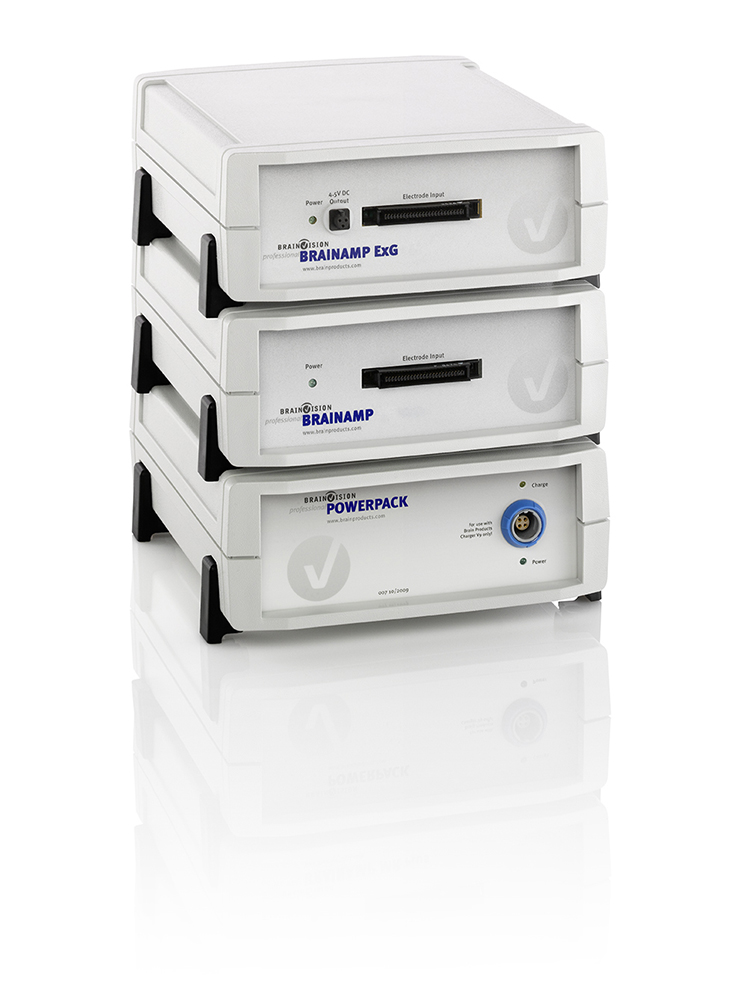 Brain Product systems used at the department use passive electrodes. While the systems are able to collect data from up to 64 electrodes, the number of electrodes used can be easily changed and adapted to the study. As with the ActiveTwo system, additional EMG/EOG/etc. electrodes can be used to suit the study’s needs.
Brain Product systems used at the department use passive electrodes. While the systems are able to collect data from up to 64 electrodes, the number of electrodes used can be easily changed and adapted to the study. As with the ActiveTwo system, additional EMG/EOG/etc. electrodes can be used to suit the study’s needs.
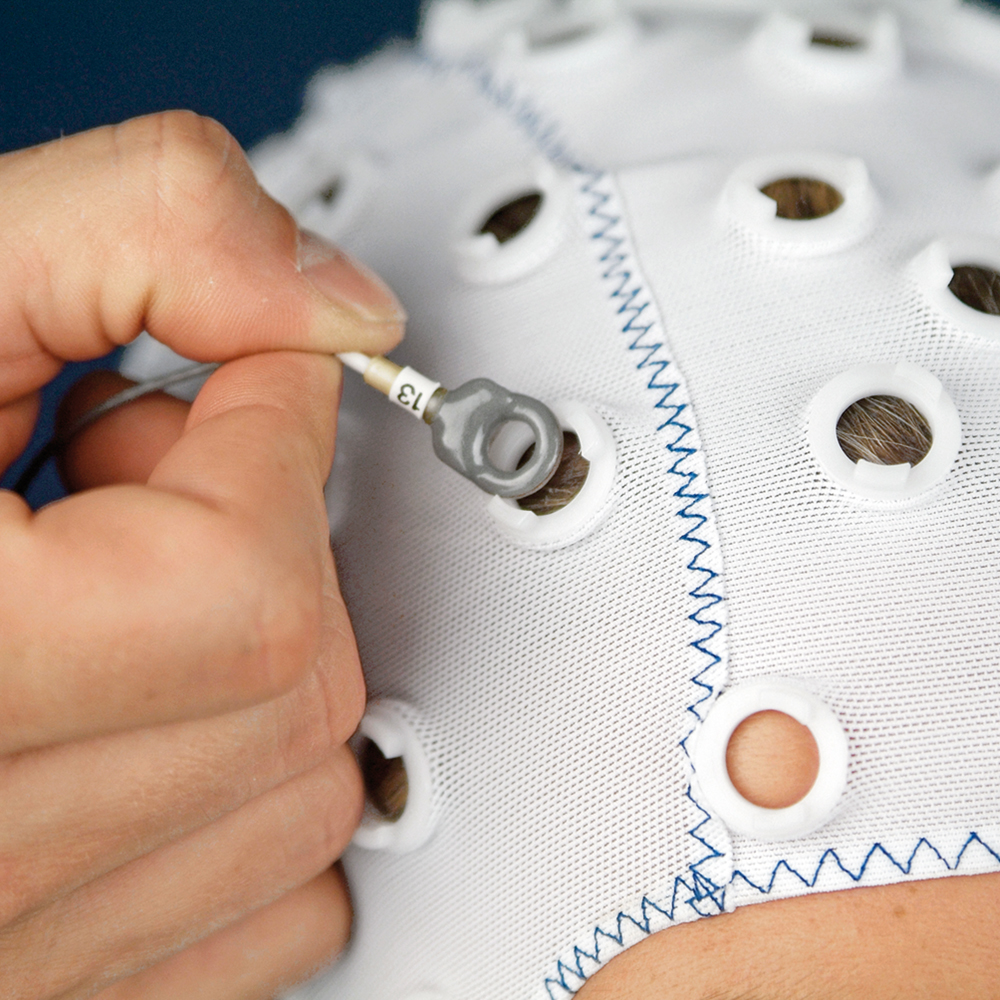
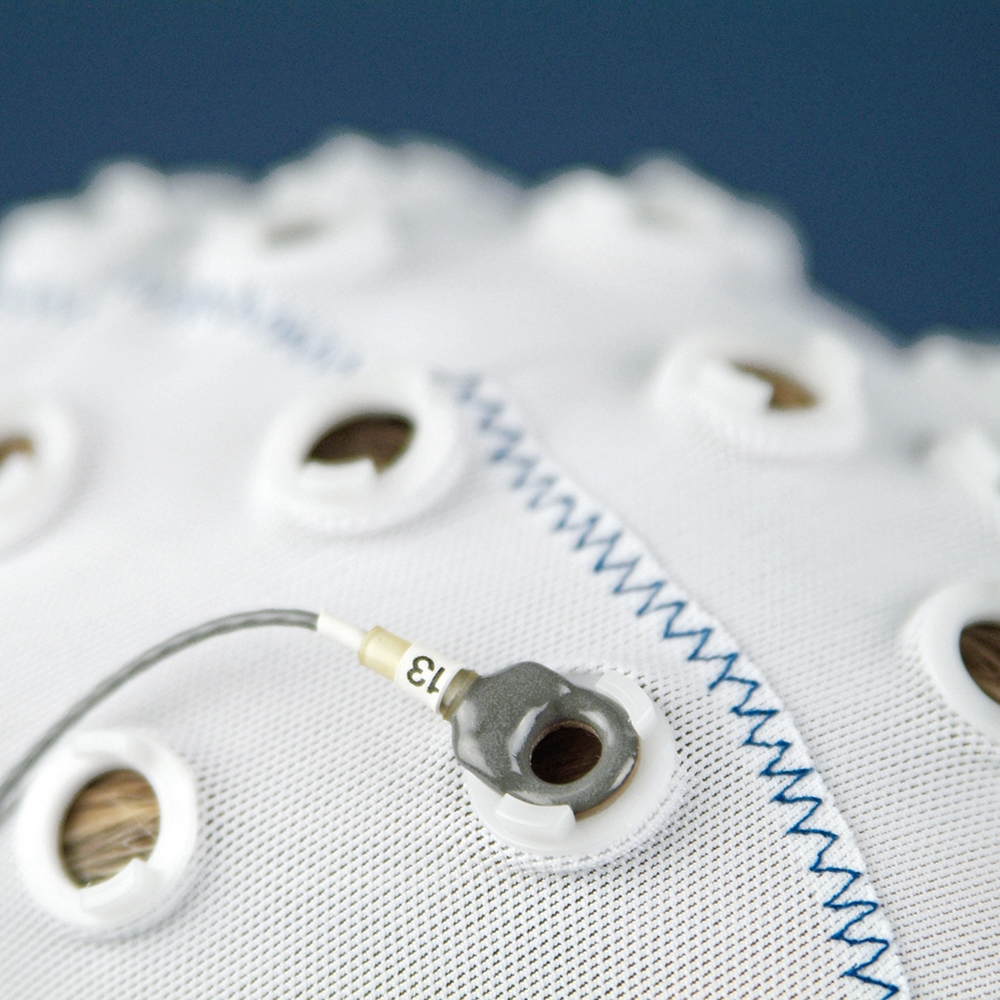
l©Brain Products GmbH. Used by permission
One must specify reference and ground electrodes used during the study. The positions of those two electrodes can vary widely according to the needs of the study, the opinion of the researcher, etc. When unsure of where to place them, ask the PI or another experienced EEG researcher for advice. All electrodes must be specified in a workspace, which tells the recording software from which channels to record and assigns standardized positions to the electrodes. The workspace also specifies different parameters like, for example, sample rate.
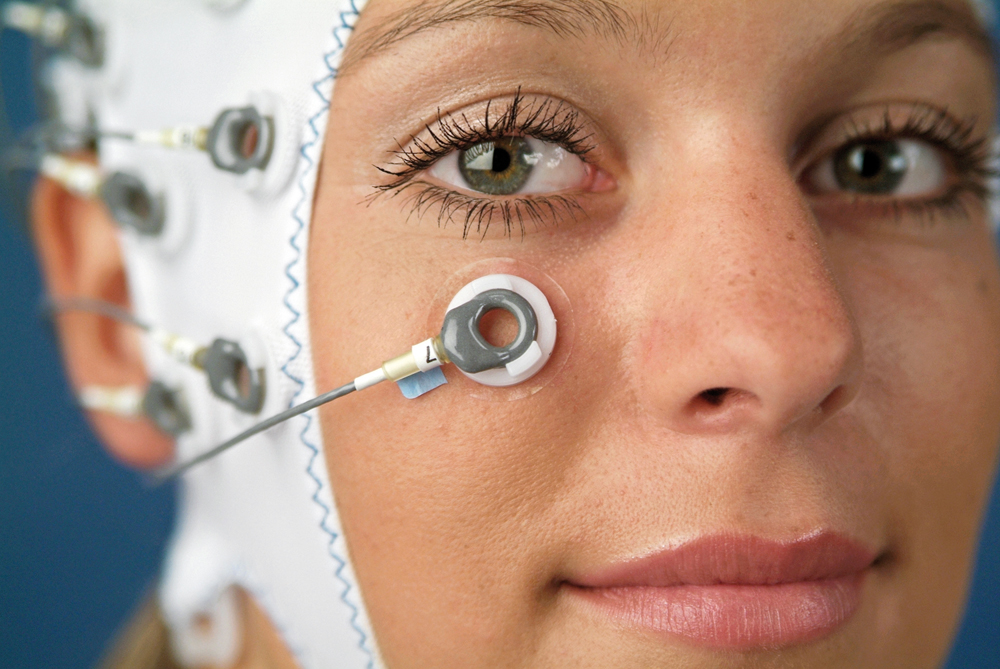
©Brain Products GmbH. Used by permission
Usually two computers are used in EEG recording. One computer presents the stimuli and monitor behavior, while the second records the EEG. These functions are not ordinarily combined into a single computer, because each requires precise timing, and it is difficult to coordinate multiple real-time streams of events on a single computer. For later analysis, stimulus presentation and responses must be recorded along with the EEG signal. For this purpose, both the A/D box and the stimulus computer are connected to a trigger box (in Biosemi USB2-Receiver) where event codes from the stimulus computer are integrated with the EEG signal. These event codes are later used to extract time-locked epochs from the EEG data.
